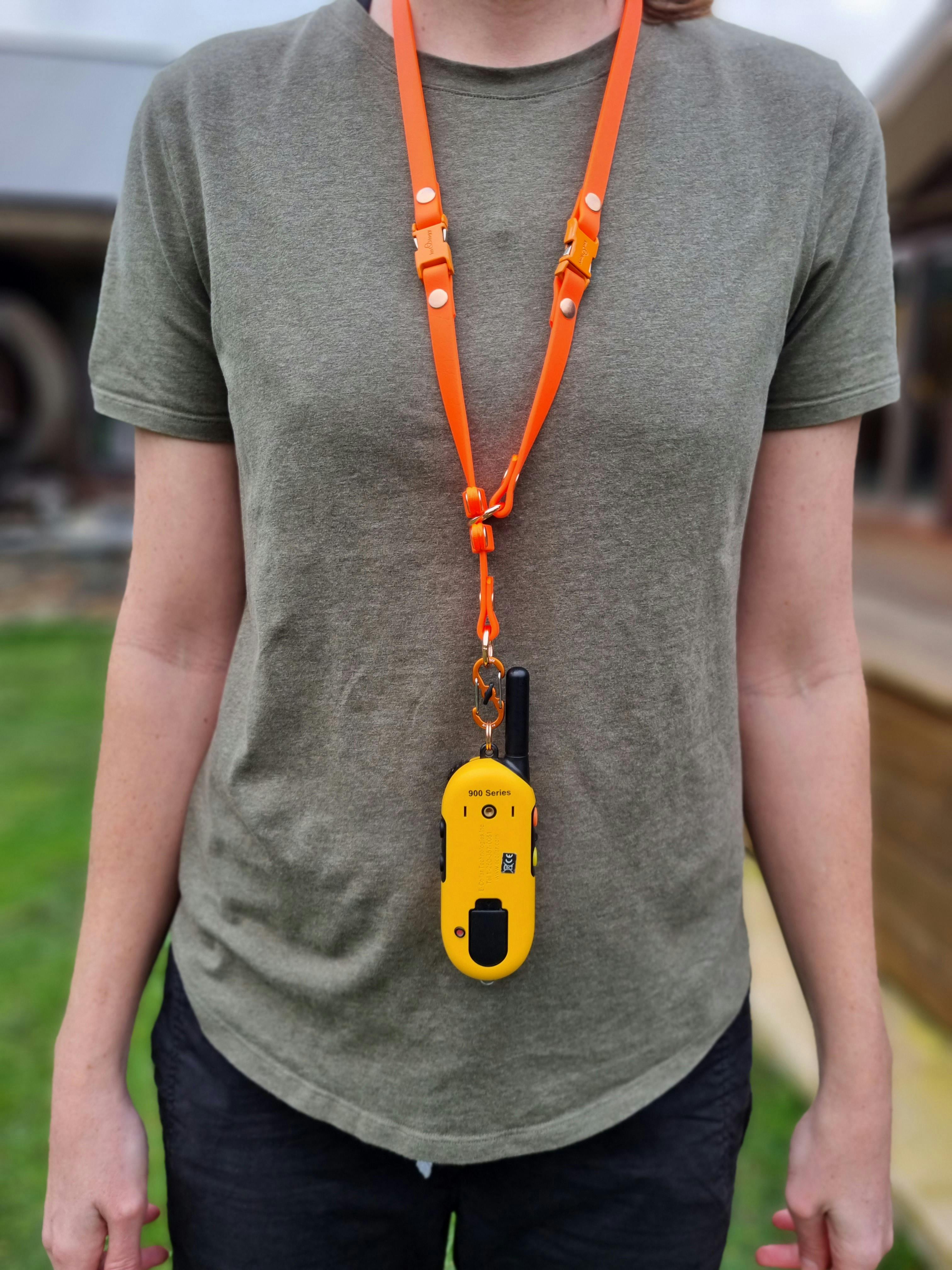Made in New Zealand
Global Shipping
Current production time 1-3 days
Electronic dog collars - the good, the bad and the ugly
Electronic dog collars (or e-collars) can be an incredibly effective training tools when used correctly and carefully, but they can also cause harm if misused.

Electronic dog collars, also known as electric collars, remote training collars, e-collars or shock collars, have become a contentious topic of debate amongst the dog training community. In this blog article, we aim assess and consider both sides of argument. To do this, we explore the purpose, uses, risks and benefits of the e-collar.
What does an electronic dog collar do?
The primary purpose of an e-collar is to provide a dog owner with a mechanism to gain their dog's attention when the dog is physically out of reach. With the dog's attention, the owner can then ask their dog to either start or stop doing something. For example, "start coming back to me" or "stop jumping up on that child". The 'attention gaining mechanism' within an e-collar varies, but typically includes the following 'modes':
- Tone – this mode produces a high-pitched noise
- Vibration – this mode produces a strong vibrating sensation
- Stimulation – this mode produces a mild electric/static stimulation.
Common uses of the electronic dog collar
The primary uses of e-collars are for (1) training reinforcement, (2) behaviour correction, (3) containment and (4) tracking. But before using an e-collar for any of these purposes, it is necessary to gradually and carefully introduce the dog to the e-collar (see below for more information).
Training reinforcement
The e-collar is an extremely effective training tool when used correctly. When first introducing the e-collar or teaching a new behaviour, the e-collar should be paired with positive reinforcement. This works by pairing low-level stimulation from the e-collar (i.e. at a level that it is barely perceptible to the dog) with some form of reward, such as a treat or verbal praise. This approach teaches the dog that if they do what is asked, they can both 'turn off' the stimulation and receive a reward – double bonus!
Behaviour correction
The e-collar can also be used to correct or discourage unwanted behaviour. This should only be done when the dog is comfortable and familiar with the e-collar. Correcting unwanted behaviour works by using the e-collar to give your dog a corrective 'nip' when he or she is doing something undesirable (in the same way as a fellow canine would nip another). The level of stimulation used for correction is typically higher than that used for training.
A practical example of this is the ‘Kiwi Avoidance Training’ programme used in New Zealand (and endorsed by the Department of Conservation). This training programme pairs Kiwi scent and decoys with stimulation from an e-collar to teach the dog that if he/she goes near a Kiwi bird, an unpleasant sensation will occur, thus creating avoidance or aversion behaviour.
Containment
To achieve containment, e-collars can be paired with an ‘invisible fence’ (usually a wire buried in the ground), to create an invisible barrier. When the dog goes near the barrier, the e-collar activates and provides stimulation. This works much in the same way as an electric cattle fence (except the electric stimulation come via the collar rather than the fence itself).
Tracking
With the addition of GPS tracking, e-collars can be used to accurately identify a dog’s exact position or location. And remote stimulation can be used to recall dogs back to their owners, even if they are out of shouting/hearing range. GPS enabled e-collars are usually used for hunting, field trials and search & rescue.
Benefits of electronic dog collars: Consistency, control and freedom
The feature that makes the e-collar truly unique is its ability to give a dog direct and tactile feedback from a distance. This means that you can still ‘reach’ your dog, even when they are physically out of reach. This ability for 'remote reach' provides a range of unique and specific benefits (noting that these benefits can only be achieve if the e-collar is used carefully and correctly):
- Clear and consistent communication – the e-collar provides a very tactile and consistent way to communicate with your dog from a distance and in a manner that leaves no room for confusion.
- Ability to stop bad behaviour – the e-collar can be used to provide an effective, quick and humane way to clearly say “no” in a way that’s meaningful to a dog (like a quick nip from a fellow canine). This is especially important if said bad behaviour has the potential to put you dog, yourself or others in danger e.g. jumping up on elderly people or children.
- Ability to keep your dog safe – if your dog is hurtling towards a cliff in pursuit of a rabbit; about to run in front of a car; or about to say hello to another dog that looks less than friendly, the e-collar can be used to stop them in their tracks and bring them safely back to you.
- Ability to give your dog freedom – the e-collar provides an owner with confidence that they can recall their dog remotely (i.e. when the dog is out of physical reach and/or in an environment of high distraction). This means that dogs can experience a level of freedom that might not otherwise have been available to them.
Risks of electronic dog collars: Potential for misuse or malfunction
The primary risk associated with the e-collar is the risk of misuse. Whether this misuse is intended or not, the e-collar has the potential to cause significant harm. This harm generally arises as a result of one or both of the following:
- Failure to introduce the e-collar properly and progressively – you cannot simply strap on an e-collar, apply stimulation and expect your dog to know what it means! Taking this approach will result in a confused and distressed dog! To ensure your dog is comfortable wearing an e-collar and understands what is required of them when they feel stimulation (or hear tone), an e-collar must be carefully and gradually introduced over a period of time.
- Lack of understanding/knowledge on how to train using an e-collar – incorrect use of an e-collar can also cause discomfort, confusion and anxiety. And if this continues, it may lead to adverse emotional and psychological effects, including heightened fear or aggression (and needless to say that all these things will have a detrimental effect on the relationship between owner and their dog).
Beyond misuse, the other risk associated with e-collars is the risk of malfunction. As with any electrical equipment, there is scope for something to go wrong. If an e-collar malfunctions and provides stimulation at a time or level that is not initiated by the owner, this has the potential to cause a dog harm (in the same way as misuse). This is why, if you choose to use an e-collar, it’s critical to choose a reputable and high-quality brand.
Responsible use and effective training practices
When using an e-collar, the end goal should be to communicate with your dog in a way that is clear, consistent and kind. To achieve this, you will need:
- A high-quality e-collar from a reputable manufacturer such as Educator, Dogtra and Garmen.
- A tight-fitting e-collar – to ensure your dog is receiving consistent stimulation (at the lowest level required).
- To gradually introduce the e-collar to your dog.
- To have knowledge (and ideally experience) of how to train with an e-collar.
- To understand your dog’s unique level of sensitivity (so that you can choose an appropriate mode and level of stimulation).
If you decide to use an e-collar, you will also need to consider how you intend to use it and choose a model with modes and features that suit. For example, if you are using an e-collar for training, behaviour correction or containment - you will likely want/need the collar to include tone, vibration and stimulation modes. And if you're using an e-collar for tracking - you will need an e-collar with GPS tracking and potentially other modes of stimulation if you need to reliability recall your dog from the field. Other e-collar features and specifications to be aware of are:
- Range of transmission – the workable distance between the remote operated by the owner and receiver worn by the dog.
- Sensitivity levels – better quality collars have small increments between stimulation levels, meaning they usually range from 0-100.
- Number of receivers – being the number of dogs that can be managed from a single remote.
- Overall quality – including features like durability, shock resistance, battery life and waterproofing.
To E or not to E?
E-collars can be incredibly effective dog training tools when used correctly and carefully. But they also have the potential to cause significant harm if used appropriately. When making the decision of whether or not to use an e-collar, we’d recommend you consider the following questions:
- Does the e-collar align with your personal philosophy on dog training (i.e. do you subscribe to a balanced or positive only approach)?
- Has your dog experienced any type of past trauma that might be triggered by an e-collar (if yes, the e-collar may not be appropriate for your dog)?
- Are the physical attributes of your dog appropriate for an e-collar (i.e. may not be suitable for very small dogs)?
- Are you willing to invest in a high-quality e-collar (these can be expensive)?
- Are you willing to put the time and effort into learning how to use an e-collar properly (even if you engage a professional dog trainer to do most of the training, you will still need to use the collar on an on-going basis)?
There are always two sides to an argument and in the case of e-collars, no 'one size fits all' solution. The tool might be appropriate for some dogs and wildly inappropriate for others. The decision of whether to use an e-collar should be made on a case-by-base basis and by weighing up the risks & benefits and pros & cons.
- August 2023
Author: Lorna Brennan, Managing Director, Led & Collared®
© 2023 Led & Collared®. All Rights Reserved. Wellington, New Zealand.





